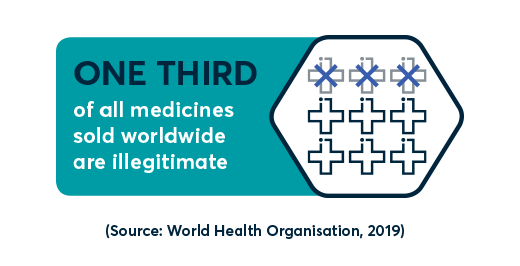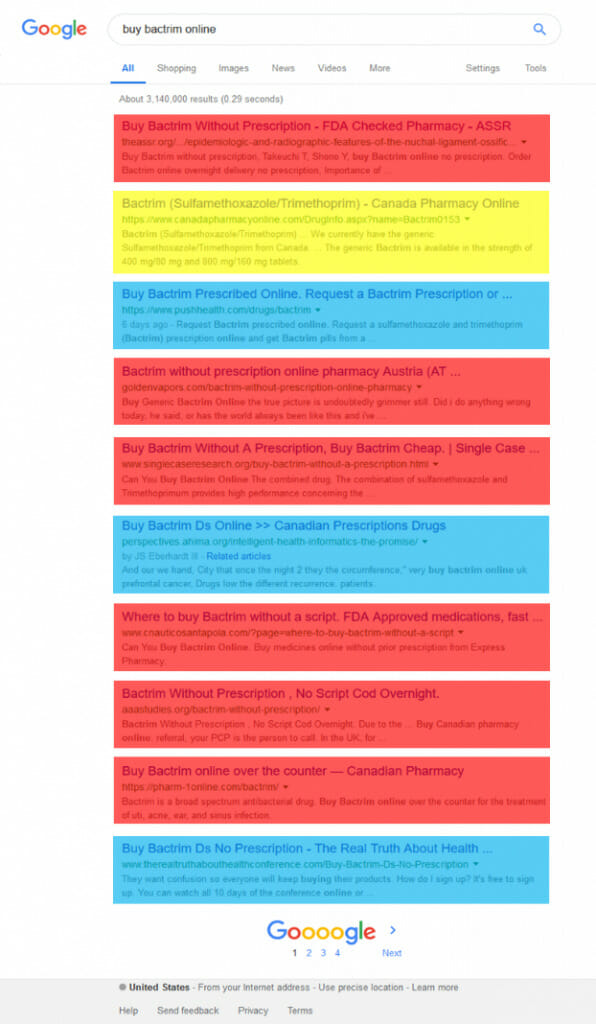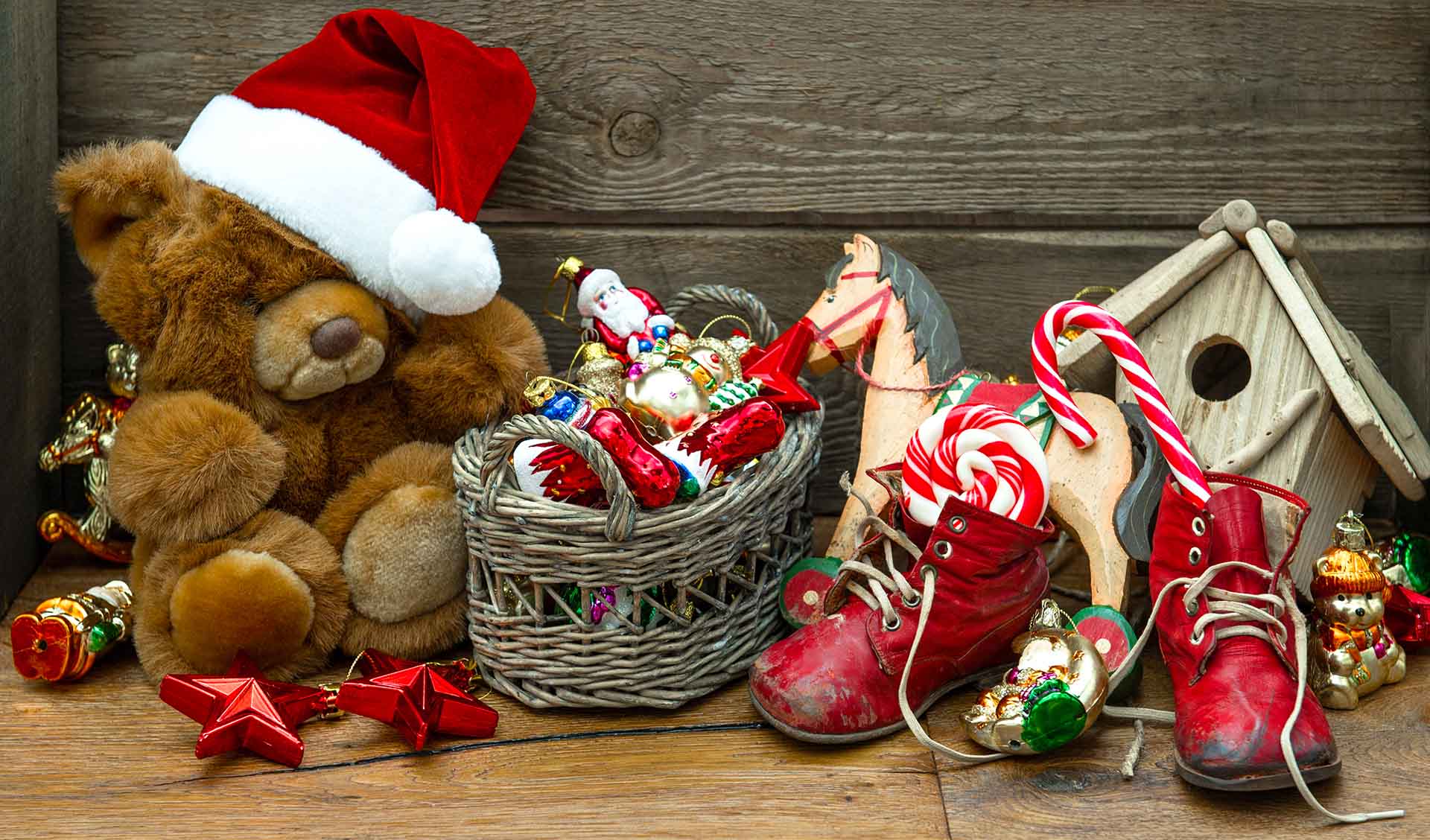Blog
How search engines are directing consumers to dangerous fake pharmaceutical products
- Brand Protection

According to Corsearch research, up to 60% of the first-page results for the search query ‘buy Bactrim online’ (a branded antibiotic) are for sites selling counterfeit or unsafe products.

Fake pharmaceuticals are on the rise and are readily available online, with Search Engines pivotal in directing users to infringing locations. To uncover the scale of the issue, Corsearch has undertaken new research into the role Search Engines play in serving counterfeit and other illegal content to unwitting consumers.
Search Engines are enabling illegal online pharmacies to flourish, and this puts consumers at great risk. Search engines should provide a scalable solution to help brands remove illegal online pharmacies from their index.
The dangers of fake pharmaceuticals
Consumers exposed to fake medications are put at severe risk. Counterfeits leave health issues untreated and may, in fact, make them worse by building pathogen resistance against an active ingredient found in the genuine drug. Consumers given the wrong dosages can also be susceptible to adverse side effects. In some cases, counterfeiters even add dangerous or toxic substances to their products to achieve a ‘desired’ side-effect to give them the aura of authenticity.

According to pharmaceutical company Bayer other examples of counterfeited drugs include[1]:
- Products with manipulated expiration dates
- Products containing no active agents (rendering the medicine useless)
- Products wrapped in forged packaging
Finding counterfeits through search
Search Engines play a direct role in enabling illicit trade, with consumers fooled by the faux legitimacy given to locations found at the top of search queries. Alarmingly, consumers most often reach counterfeit locations through organic search queries, rather than direct links.
Corsearch research reveals that, on average, over 58% of traffic for infringing pharmaceutical websites originates from organic search. Over 47% of traffic to these infringing locations comes from keywords that specify a brand or a particular product. This echoes a study by IFOP, a leading international polling and market research firm, that highlights that 47% of people who had bought an infringing product typed the name of the product into a Search Engine before making a purchase.
For pharmaceuticals, our research found that total traffic from product or brand keywords is 60%, indicating that consumers look for specific drugs when using search and are likely being unknowingly misdirected to infringing sites.
Counterfeits appearing at the top of search results
The problem is exacerbated by fraudulent websites appearing at the top of search results for popular queries. According to a 2017 study by one of the world’s largest telecommunications groups, Optify, the first result shown on a search query will receive over 44% of all “click-throughs”[2].
After an update to Google’s search algorithm in August 2018, dubbed ‘Medic’[3], commentators began suggesting that the platform may be inadvertently favoring fraudulent websites[4]. The update, while reportedly not aimed at the medical and health space, had the greatest impact on sites within this sector and, as with all previous core algorithm changes, was designed to “benefit pages that were previously under-rewarded”.
For the five sectors investigated in this study, more than 26% of potentially harmful sites appeared within the first three search results.
Brand names and trademarks used within domains
Those results appearing in the top spots were more likely to have a brand name in the domain name itself, indicating that search algorithms may, in fact, be favoring illicit locations that hijack trademarks for SEO.
Applying Corsearch’s visibility score, our data-science-led method of indicating how visible an infringement is to consumers, we discovered that over 27% of potentially harmful websites had a visibility score of 10 or above, meaning that there was a high chance of being found by users. The analysis found that brand names and product-specific keywords were, again, prevalent in the domain names of these websites.
The screenshot below is the search results on Google.com for the term ‘buy Bactrim online’. Potentially harmful sites are highlighted in red, lawful sites in yellow, and “information only” websites in blue.

Screenshot taken on 07/05/2019: Search results on Google.com for the term ‘buy Bactrim online’ (Corsearch, 2019)
60% of the results above were identified as potentially harmful. A “potentially harmful site” will typically use a third-party registered trademark without permission and fraudulently claim to be accredited by regulatory bodies[5].
By combining the highly conservative conversion rate of 2.5%[6] and the average traffic coming from organic search, we estimate that an infringing pharmaceutical site will sell to 642 users a month.
With this issue now reaching a critical state; we believe Search Engines can do more to stop it.
An opportunity to protect consumers
Google’s dominance is clear, holding 92.42% of the global market share today. But it is important to note that Search Engines such as Baidu, in China, and Yandex, in Russia, have a stronghold of their domestic markets (66.89% and 49.13% respectively).

Search Engine market share (Corsearch, 2019)
The FDA and other government bodies have limited resources and cannot solve the issue alone. Brand owners should be able to seek remedies for themselves and alert platforms to infringement.
However, the issue needs to be approached at a sector level if it is to be effectively solved; online infringers are adept at switching tactics when one source of traffic and revenue is shut off.
By taking the lead, Search Engines can together set the standard for protecting consumers online.
White paper: How and why search engines must take responsibility for tackling counterfeiters
References
[1] Bayer – https://www.bayer.com/en/background-information-on-counterfeit-drugs.aspx
[2] How many clicks get the results on Google’s first results page? (SEOprofiler, 2017): https://blog.seoprofiler.com/update-clicks-results-googles-results-page/
[3] Everything you need to know about the Google Medic update (Wpromote, 2018): https://www.wpromote.com/blog/everything-need-know-google-medic-update
[4] False flags: Are search engines benefiting rogue online pharmacies? (Pharma Technology Focus): https://pharma.nridigital.com/pharma_apr19/false_flags_are_search_engines_benefiting_rogue_online_pharmacies
[5] https://www.cipa.com/certified-safe-online-pharmacies/
[6] Average conversion rate analysis – https://www.invespcro.com/blog/the-average-website-conversion-rate-by-industry/





